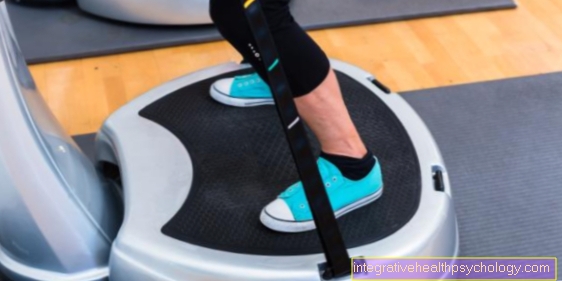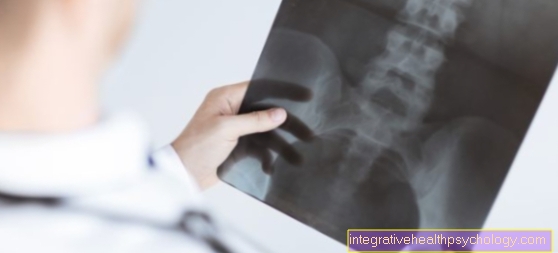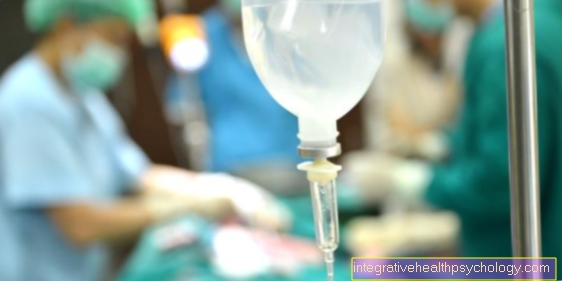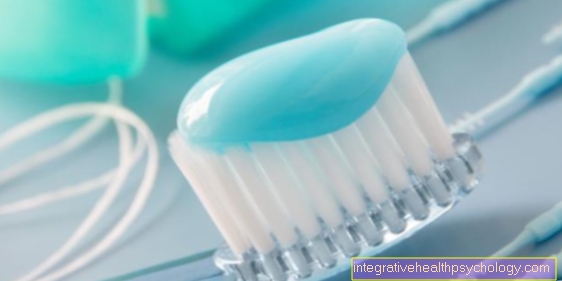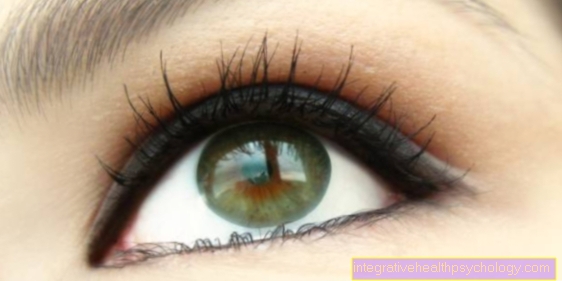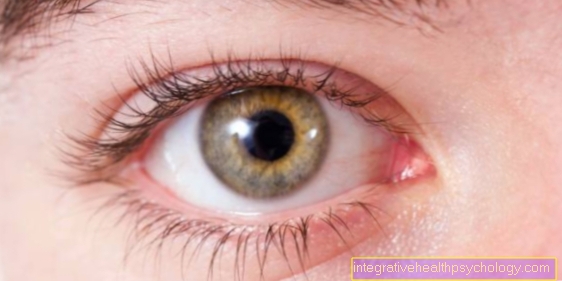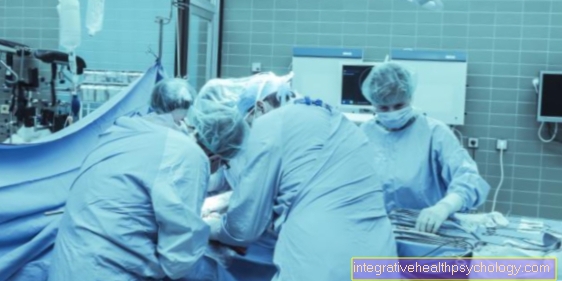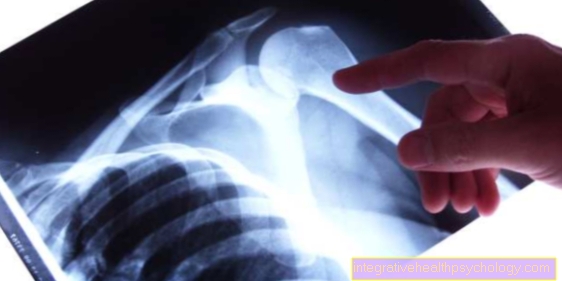Therapy cardiac arrhythmias
General principles of therapy
When treating Cardiac arrhythmias the causal therapy comes first. Are the cardiac arrhythmias diseases of the Heart or metabolic disorders (e.g. Hyperthyroidism), an attempt is made to treat them first.
Often they form Cardiac arrhythmias then back. Is it not possible to treat the underlying heart rhythm disorder (e.g. if a Heart attack has left permanent damage to the heart muscle) or if the cardiac arrhythmia persists despite treatment of the underlying disease, symptomatic therapy (treatment of the symptoms) is used.
In the symptomatic therapy of cardiac arrhythmias, a distinction is made between general measures such as Sedatives, oxygen and possibly bed rest from direct antiarrhythmic therapy, which rests on three pillars:
- medical therapy
- Electrotherapy e.g. Pacemaker
- Cardiac surgery
Drug therapy with antiarrhythmics
Drugs against Cardiac arrhythmias are used, often have very complex modes of action, including on the excitability of the heart, on the Heart rate and other electrophysiological properties of the heart. It must be decided individually for each patient which drug is the most suitable with regard to their disease.
The following list therefore gives an overview of the individual classes of antiarrhythmics Vaughan WILLIAMS and also names the main indications, i.e. areas of application without going into the individual effects and side effects, so as not to confuse.
Class I sodium channel blockers
a) quinidine, ajmaline
b) lidocaine
c) propafenone
Operation area: mostly in acute Ventricular arrhythmias
The problem with class I antiarrhythmics is that, under certain conditions, they can in turn lead to arrhythmias, even though they are being used against them. They should therefore only be used after a careful risk-benefit assessment.
Class II beta blockers
e.g. Bisoprolol, Metoprolol
Operation area: Tachycardia, condition after Heart attack
In addition to the direct treatment of cardiac arrhythmias, beta blockers also serve to treat the underlying diseases that lead to arrhythmias, such as of the CHD (Coronary artery disease)
Class III potassium channel blockers
e.g. Amidarone or Sotalol
operation area: Ventricular arrhythmias and atrial fibrillation
Class IV calcium channel blockers
Operation area: Atrial fibrillation
Read more on this topic at: Medicines for irregular heartbeat
Electrotherapy
The electrotherapy of cardiac arrhythmias involves the use of pacemaker systems. On the other hand, this also includes defibrillation and high-frequency current ablation
Pacemaker
A Pacemaker or Pacemaker (PM) (English "The pacemaker") is a medical electrical device that determines the heart rate when the heartbeat is too slow, ie a Bradycardia, can accelerate. In the meantime, however, devices are also in use that are implanted as antitachycardia systems and function like a built-in defibrillator.
In addition, there are systems that combine both modes of operation, i.e. can intervene in the heart rhythm when the heartbeat is too fast or too slow. There is a letter code for pacemakers, den NBG code:
Among other things, it provides information about the Location, the Operating mode and the Rate adaptation. Different sensor types are used e.g. the minute volume of the patient is determined (volume and number of breaths per minute, this value correlates with the physical exertion and thus with the required heart rate).
The required heart rate calculated by the sensor is compared with the actual frequency, which is generated by a built-in EKG is measured, compared. Below or above the actual frequency (Cardiac arrhythmias) the calculated physiological heart rate range, the pacemaker emits small electrical shocks and can thus influence the frequency. In addition to the respiratory minute volume, modern pacemaker systems also measure many other values in order to achieve the most accurate possible adjustment of the calculated value.
Defibrillation
The Defibrillation comes e.g. for use in ventricular flutter and ventricular fibrillation.
The aim of defibrillation is to bring the uncoordinated working cells of the stimulation system of the heart back into harmony and the rhythm of the Sinus node (natural pulse pacemaker).
Note: function of a defibrillator
The process can be illustrated by the image of an orchestra. In ventricular fibrillation, the individual cells of the stimulation system play wildly and quickly. The sinus node as a conductor can no longer be heard. The defibrillator as chief conductor Cardiac arrhythmias silences all cells at once with a direct current surge. Now the sinus node can take over again and set a clock.
High frequency current ablation
In high-frequency ablation, unwanted tissue is sclerosed and ablated using high current doses. For this purpose, a so-called cardiac mapping is carried out beforehand, i.e. A "map" of the heart is generated on the computer to record the exact location of the cells that are the focus of the arrhythmia, so "always play in between" (see note on defibrillator).
This minimally invasive procedure is now used in many different forms of arrhythmia, e.g. in WPW syndrome or atrial reentry tachycardia.
Surgical therapy
With the development of catheter ablation, rhythm surgery has taken a back seat

.jpg)



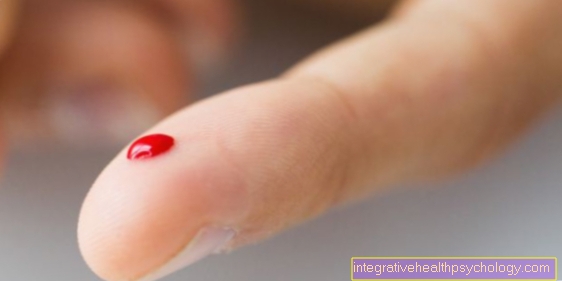







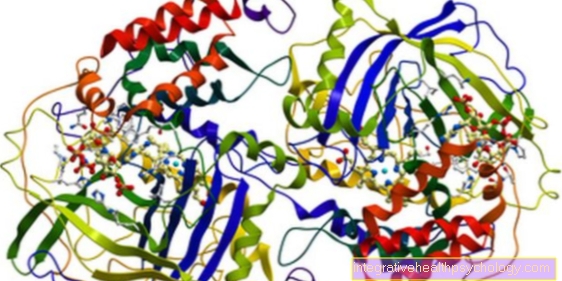
.jpg)


